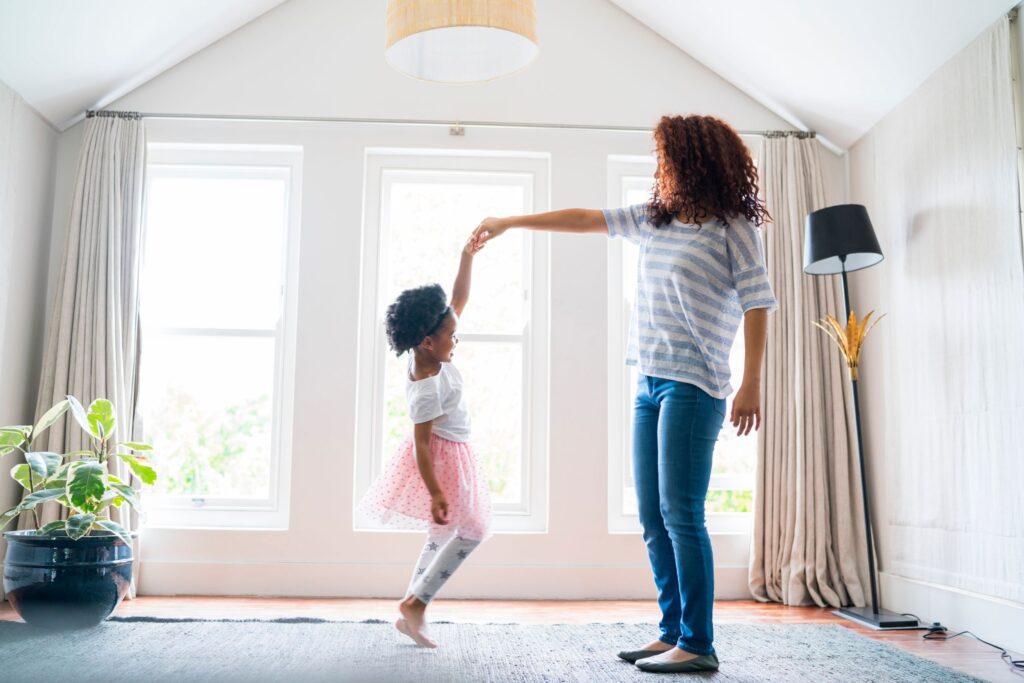Ballet is an art form and a fantastic way to improve physical health. It helps build muscle strength, increase flexibility, improve posture, and promote coordination. Ballet movements engage the entire body, making it an excellent full-body workout. Learning ballet at home can be a rewarding experience when done correctly, but it’s essential to understand the proper techniques and create a conducive environment for practice.
1. Create the Right Space for Ballet Practice
The first step to learning ballet at home is to create a safe and spacious area where you can practice. You don’t need a professional dance studio, but a clear, open space with enough room to stretch and move freely is essential. Here’s what you’ll need:
- Space: The space should allow you to stretch out fully in every direction. It doesn’t need to be large, but it should be free of furniture and obstacles.
- Flooring: Ballet is best practiced on a smooth, non-slippery surface. Hardwood floors or a soft carpet with a mat underneath are ideal. Avoid practicing on concrete or hard surfaces that can strain the joints. If you don’t have a ballet floor, an exercise mat can help cushion your movements.
- Mirrors: While not strictly necessary, mirrors allow you to check your form and posture. A simple handheld one can work wonders if you don’t have a full mirror.
2. Invest in Basic Ballet Gear
While ballet can be practiced with minimal equipment, having the right gear can make your training more comfortable and effective. Here are the essential items for beginners:
- Ballet Shoes: Invest in a good pair of ballet shoes that fit properly. They don’t need to be expensive, but make sure they’re designed for ballet practice. Soft leather or canvas shoes with a flat sole are ideal for beginners.
- Comfortable Clothing: Wear comfortable clothing that allows free movement. A leotard and tights are traditional, but any form-fitting clothing will work if you’re practicing at home. Ensure that you can move freely without any restrictions.
- Resistance Bands: Resistance bands can help build strength, particularly in the legs and feet. They’re also great for stretching exercises and can enhance flexibility.
3. Start with Basic Ballet Positions
Before exploring complex movements, it’s essential to familiarise yourself with the basic ballet positions. These foundational positions are the foundation for most ballet steps and will help you develop the correct posture and alignment.
Here are the five main positions of ballet:
- First Position: Stand with your heels touching and your toes turned outward in a V-shape. Your legs should form a straight line from your hips to your feet.
- Second Position: Start from the first position and move your feet apart, pointing your toes outward. Your feet should be aligned with your hips.
- Third Position: One foot is in front of the other, with the front foot’s heel touching the back foot’s arch.
- Fourth Position: One foot is placed in front of the other, about a foot’s distance apart, with the feet turned outward.
- Fifth Position: The front foot is placed in front of the back foot, with the heel of one foot touching the toes of the other.
Mastering these positions will help you maintain balance and form while performing more complex steps.
4. Work on Flexibility and Strength
Ballet requires a combination of strength and flexibility. As a beginner, it’s essential to incorporate stretches and strength-building exercises into your practice. Here are some suggestions:
- Stretching: Focus on stretching your hamstrings, calves, hips, and lower back. A good stretch routine will improve your flexibility and help you achieve the extended lines seen in ballet.
- Core Strength: Ballet requires a strong core for stability and balance. To build strength in your abdominal and lower back muscles, incorporate exercises like planks, leg raises, and bridge poses.
- Leg Strength: Your legs carry most of the weight in ballet. To build leg strength and improve balance, practice exercises like squats, lunges, and relevés (rising onto your toes).
5. Follow Online Ballet Tutorials and Classes
One of the best ways to learn ballet at home is through online resources. Many ballet tutorials and beginner classes are available on YouTube or through paid platforms. Look for instructors who specialise in ballet for beginners to ensure that you’re learning the correct technique.
6. Learn the Basic Ballet Movements
You can begin learning basic ballet movements once you’ve mastered the basic positions. Here are some essential movements to start with:
- Plié: This movement involves bending your knees while keeping your heels on the ground. It’s often done in the first, second, and fifth positions and is essential for many other steps.
- Tendu: In this move, you slide one foot along the floor until fully extended, then return it to its starting position. Tendu strengthens the feet and helps develop coordination.
- Relevé: This is when you rise onto your toes (or demi-pointe) from a flat position, strengthening your feet and calves.
- Jeté: This is a leap or jump where one leg extends into the air while the other leg stays in the starting position. It’s a fun move that can be built upon as you get more confident.
- Arabesque: In this posture, you balance on one leg with the other leg extended behind you. It’s a graceful pose that showcases strength and balance.
7. Practice Regularly and Set Goals
Consistency is key when learning ballet. Set aside time each week to practice and focus on improving your form. Start with short sessions and gradually increase the time as your strength and stamina build.
- Set goals: Whether mastering a specific move, improving flexibility, or achieving a perfect balance, setting realistic and achievable goals can help you track your progress and stay motivated.
8. Seek Feedback and Self-Reflection
Since you’re practicing ballet at home, getting immediate feedback on your technique can be difficult. Use mirrors to observe yourself, and record your practice sessions to compare your progress. Ask a professional dancer or ballet teacher for feedback on your form.
9. Incorporate Music Into Your Practice
Ballet is not just about movement. It’s about expressing yourself through music. Once you’re familiar with the basic movements, start practicing with music. Ballet music helps you stay in rhythm and enhances the flow of your dance. It also brings the dance to life and connects you emotionally to the movements.
10. Have Patience and Enjoy the Process
Ballet is a journey that requires patience and practice. Progress may sometimes feel slow, but every practice session helps you improve. Focus on enjoying the process, celebrating small wins, and appreciating the discipline ballet brings to your life.
Conclusion
Learning ballet at home can be a rewarding experience. With the right environment, equipment, and guidance, you can achieve beautiful results. Start with the basics, set realistic goals, and practice regularly. Remember, ballet is a dance and a way of expressing yourself through movement, building strength, flexibility, and confidence. Whether you want to perform professionally or simply enjoy the art, learning ballet at home is an exciting and valuable pursuit.
Kew School of Dance offers a range of ballet classes for kids. Our experienced instructors can give your kids the expert training and encouragement to grow as a dancer. Contact us today at 03 9123 8458 / 0410 311 008 to learn more about our classes. Let us be part of your kid’s ballet journey and passion for dance!








